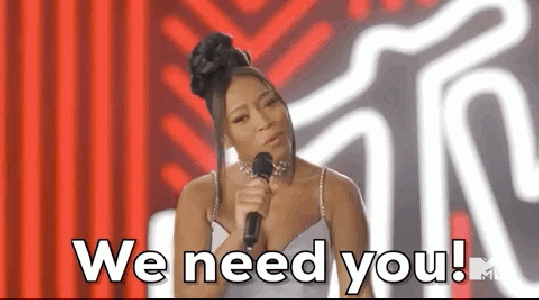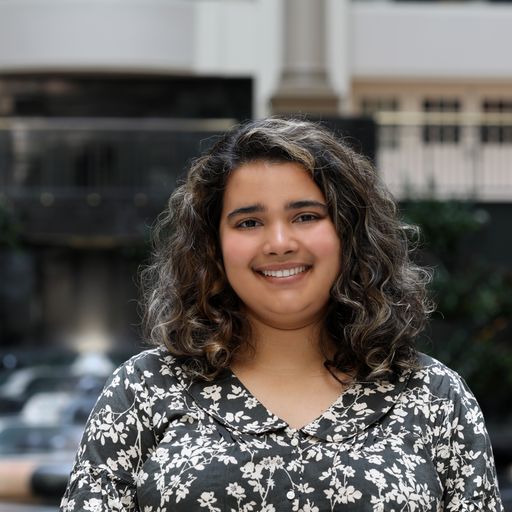Peter Groverman started collecting portraits of dead people via estate sales his antique dealer dad organized. At the sales, he would often find paintings left behind of people’s distant relatives. Groverman hired artists to paint on top of the existing portraits, eventually adding 26 to his collection.
With all that art, the Gladwyne-based entrepreneur decided he wanted to open a gallery, specifically one at the famed Art Basel in Miami this year.
A consultant he was working with on the physical gallery suggested he do something in the metaverse, and put him in touch with the people behind Voxbox. He began working with the architectural metaverse development company to create the gallery and filled it with his existing collection. Now, he’s also filling it with art from other artists, with about 14 artists total showcased in the online gallery.
Stretch Gallery launched in the Spatial metaverse about three weeks ago. Groverman plans to follow his original plan and open a physical gallery, too, in Miami at the end of November.
🎉🎥VOLUME II 🎥🎉
As we build Web3 together, the cycle of inspiring and being inspired never ends. We are honored to provide the tools for Spatians to do that every single day. Our creators speak for themselves, just watch and see the magic unfold…✨ pic.twitter.com/aNDJJ9bwxu
— Spatial (@spatialxr) August 23, 2022
Stretch Gallery is the ultimate side hustle, as Groverman is simultaneously still on the board of Grovara, the executive director of Better For You Media and acting as cofounder to his nonprofit, The R.E.L.I.E.F. Foundation. He is currently running Stretch Gallery from his garage.
He started recruiting artists through personal outreach, but is open to more artists joining and submitting their work to be in the gallery, which he said already has a couple hundred pieces.
“Our gallery now is one of the nicest galleries in all of the metaverses,” Groverman said. “We’re getting hundreds of visitors every day. And we haven’t sold our first piece of artwork, but we’re about to.”
According to Groverman, the process for selling the art changes piece by piece because it’s up to each artist how they want to do it — how many versions of the digital art or nonfungible tokens there are, if there’s a physical piece of art involved, etc. Each situation and artist is different.
Along with the gallery, Groverman and his team also have a metaverse movie theater where they plan to host a metaverse film festival as well:
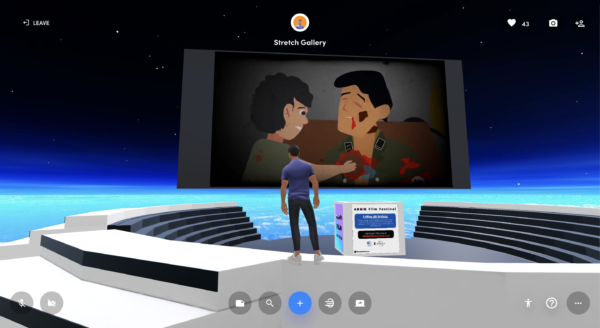
Stretch Gallery’s metaverse movie theater. (Courtesy image)
Access to the gallery and movie theater are free. In the coming months, Groverman said he wants to set up a premium area for exclusive artists and paying members. Members will get certain perks, such as private events in the gallery.
“When you look at the gallery, you’ll see it’s modeled after the Museum of the Future with the layout,” he said. “There’s all these different tiles in the gallery. And what we’re going to start doing is selling tiles. If you buy a tile, you get a membership.”
All of the art submissions are reviewed by Groverman and the gallery’s art director, Alex Kuhn. Groverman said he’s looking for art that is creative, unique and has a good story behind it.
Kuhn attended Temple University’s Tyler School of Art and Architecture for art history and has a fine art background. He said he’s a traditional artist in the sense that he’s used to physical art rather than digital art, and feels it’s important to keep an IRL space alongside the metaverse gallery.
“We want our digital gallery to be an extension of that, as a tool to help accessibility,” he said. “We want the physical work in the physical gallery to live as HD scans in the digital space, and to have the NFT work, with the digital artists that we work with, somehow live in the physical space.”
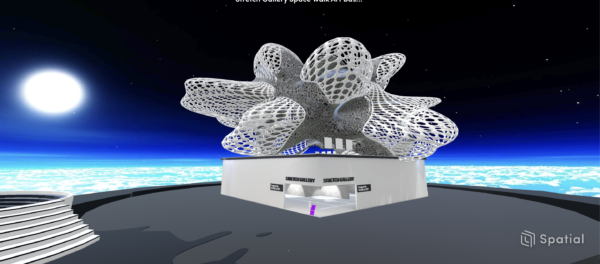
Stretch Gallery. (Courtesy image)
With this project, the digital artists Kuhn talks to are only limited by the capabilities of the technology they’re using: “Their bottleneck for moving forward is how fast can a computer get,” he said. “Because they work in math. And these visual forms are infinitely scalable and infinitely shrinkable.”
Plus, the physical art he makes can be transferred to the digital world — and the digital art others make can be printed or brought into the physical world.
“I think that there’s definitely a beautiful place for them both to live in the future,” he said. “I think we’re still figuring it out as an art community. But I want to be part of that conversation. And I think we’re doing a pretty cool job so far.”
P.S. Yes, you can find those painted-over portraits of dead people in Stretch Gallery.
Sarah Huffman is a 2022-2024 corps member for Report for America, an initiative of The Groundtruth Project that pairs young journalists with local newsrooms. This position is supported by the Lenfest Institute for Journalism.Join the conversation!
Find news, events, jobs and people who share your interests on Technical.ly's open community Slack
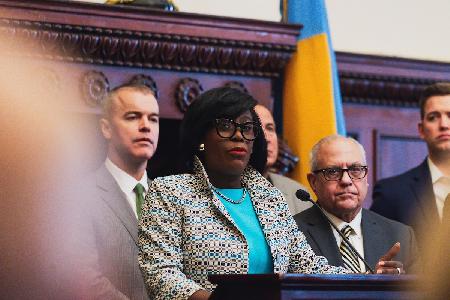
Philly’s IT department fires long-tenured staff amid a high-level shakeup of priorities

Why is it so hard to find entry-level software engineering jobs?
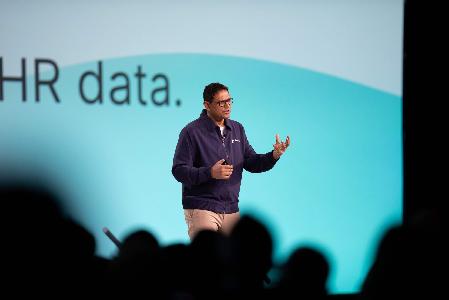
Is AI really something new — or just the next big technology platform?
